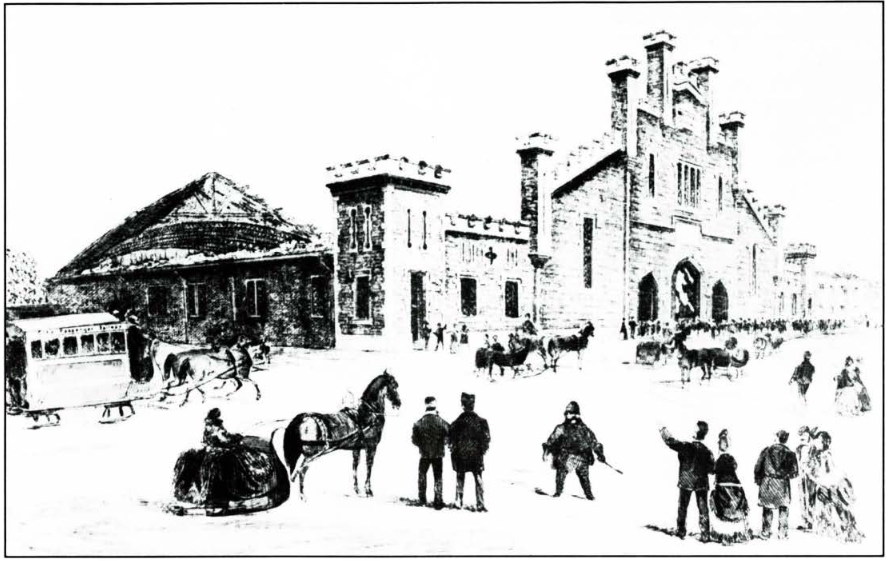Mother Nature hates buildings. She has many forces which try to push, pull bend and twist our buildings apart. These forces are the loads our buildings must be able to resist in order to remain standing. These loads can include gravity, wind, snow, and even the mass of the building itself. Loads can be broken down into 2 categories. Live and Dead.

Each on of these trusses weighs 300,000Lbs thats 1.2 million pounds of deadload in this picture alone.
Dead loads are the weight of the structure itself. Dead loads don’t change unless the structure itself changes. In the Photo above, showing the steel box Girders over the Convention floor at the Nova Center, perfectly illustrates a dead load – the girder itself. each one ways about 300,000lbs. The girder must be able to support itself across the span, and the structure supporting it, must be able to support the dead load of the girder itself.
If you look at our Halifax Armoury example, Steel trusses allowed a larger roof span than wood trusses would allow. This is important due to the dead load on the truss – a wood truss of sufficient span would not be able to support itself reliably, let alone the roof of the building and any live loads applied to it.
Live Loads are loads that can change, and must be predicted. In our armory example, Wooden trusses may be able to support the span, however not have enough of a margin to deal with an increase in a live load. This happened with the Craig Street Armoury in Montreal. It was built with a wooden truss, and was one of the largest spans attempted at the time, however the roof collapsed due to snow accumulation when the building was only 5 years old. Similar truss designs also failed due to wind loads.
Live loads, besides wind and snow, can include a buildings occupants, furnishings, traffic on a bridge. if live loads Exceed the ability of a structure to handle them, the structure can fail. One of the most dramatic example of this is the failure of the Tacoma Narrows Bridge.
Dead loads and Live loads must be kept in Balance. the additional live loads on the MacDonald bridge, caused by the addition of the third lane and, and the Pedestrian and cycling paths were offset by a reduction in the allowable dead loads the road surface is thinner, and the new sidewalks lighter. Banning trucks also keeps the live loads in check. The Hyatt Regency Skywalk Collapse is another case where combined live and dead loads exceeded the ability of the structure to support it.
SO in order to be successful, our structures must be able to contain dead loads – that is Support itself, and Contain the live loads – that is the Occupants and their activities, plus all the forces nature can throw at a building.






